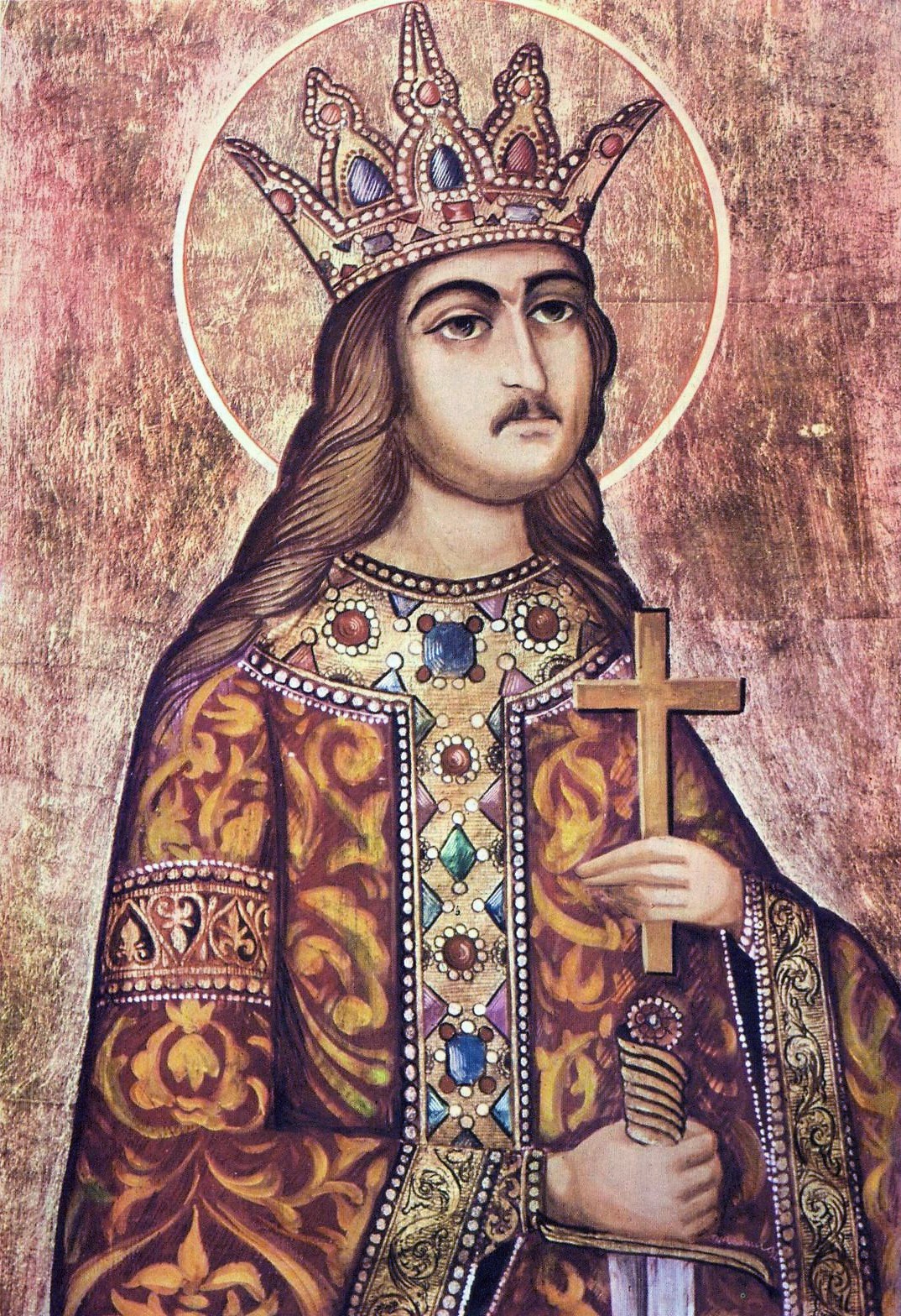Stephen the Great
- This article refers to the Moldavian voivod Ştefan cel Mare. There is also a Bucharest metro station named after the voivod - see Ştefan cel Mare metro station.

Ştefan cel Mare (Stephen the Great or St. Steven the Great or Stephen Muşat III), born in 1434, was a voivod (prince) of Moldavia (1457-1504), who won renown in Europe for his long resistance against the Ottoman Empire.
He was also the suzerain of the lands on the other side of the town of Vatra Dornei, the so-called Pocutia.
With the help of the Wallachian prince Vlad III the Impaler, Ştefan secured the throne of Moldavia in 1457. Menaced by powerful neighbours, he successfully repulsed an invasion by Hungarian king Matthias_Corvinus_of_Hungarydefeating him the the Battle of Baia in 1467, and invaded Wallachia in 1471, which had by then succumbed to Turkish vassalage.
When the Ottoman sultan Mehmed II launched an attack on Moldavia, Stephen defeated the invaders near Vaslui at the battle of Podul Inalt in 1475. Near Vaslui is the site of Steven the Great's historic 1475 victory against the Turks, which temporarily halted the Turkish advance into the Balkans.
Stephen was defeated at Războieni Valea Alba next year, but the Turks had to retreat after they failed to conquer any important castle (see siege of Cetatea Neamtului). His search for European assistance against the Turks had little success, but his determination "to cut off the pagan's right hand" won him the acclaim of Pope Sixtus IV as "Christ's Athlete".
After 1484 Ştefan had to contend not only with new Turkish onslaughts but also with Polish and Hungarian designs on Moldavian independence. Finally in 1489 he concluded with Sultan Beyazid II a treaty that preserved Moldavian independence, at the cost of an annual tribute to the Turks. From the sixteenth century the principality of Moldavia spent three hundred years under Ottoman sovereignity.
Though it was marked by continual strife, Ştefan's long reign nonetheless brought considerable cultural development; no less than 44 churches and monasteries were erected by Ştefan himself, some of which are now part of UNESCO's World Heritage.
Ştefan Cel Mare was called holy by many Christians, but it is said that he had more than 20 illegitimate children. He has been canonized by the Romanian Orthodox Church under the name Saint Stephen the Holy and Great. He is buried in the Putna Monastery.
